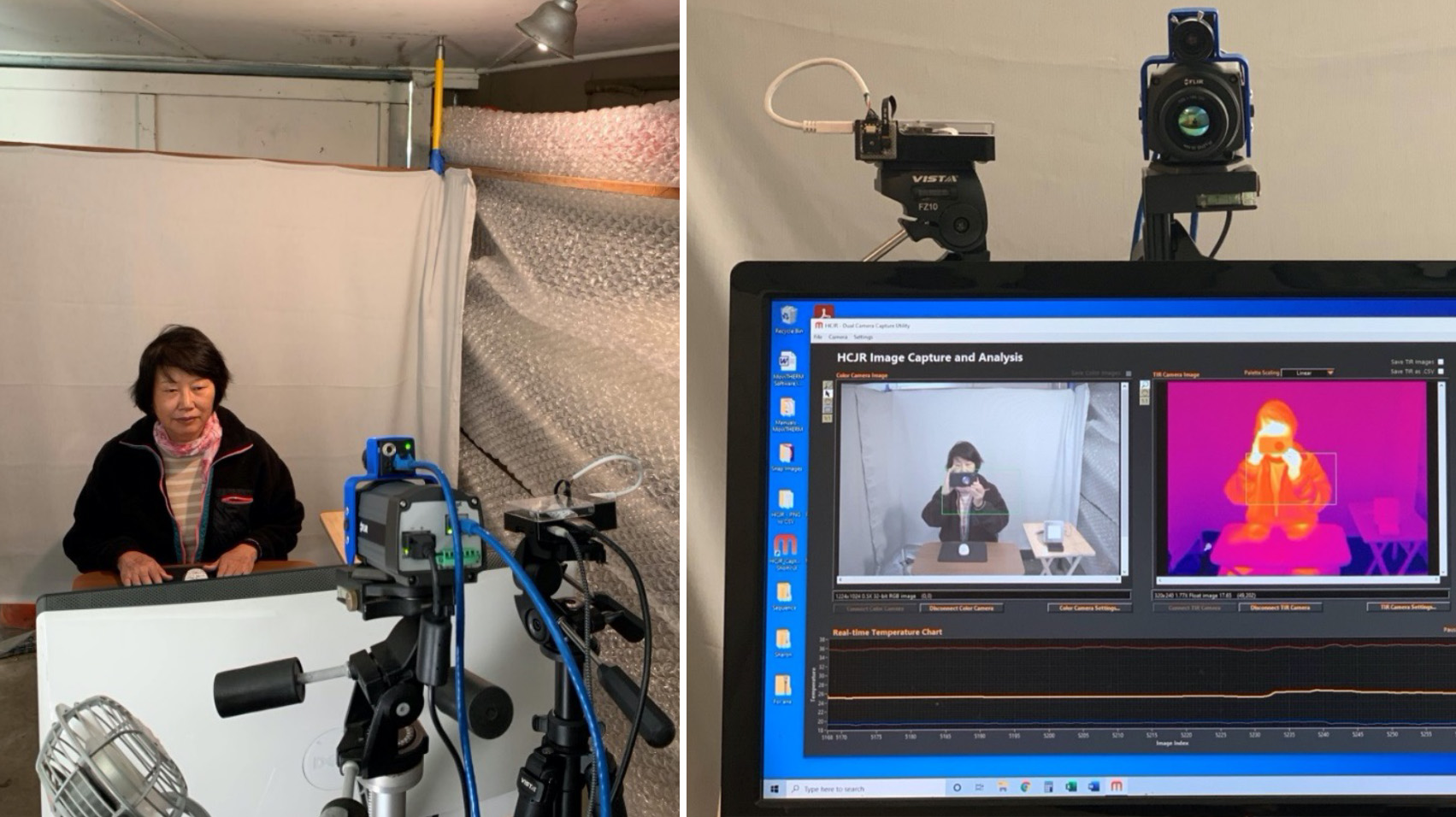Using automatic detection of occupant comfort to create a 'humans-in-the-loop' HVAC control strategy.
Status: Current
Funding Sources: U.S. Department of Energy Building Technologies Office CBE Membership Income Daikin In-Kind Support
Project Objective
The goal of this project is to develop a system using infrared biometric sensor technology to improve occupant comfort and save cooling energy by implementing a closed-loop HVAC sensor/controller that radiatively detects occupants, occupant comfort, and room surface temperature distribution, then uses this information to reduce overcooling by regulating HVAC output.
Significance to Industry
A large body of research shows that satisfaction with the temperature in non-residential buildings is consistently very low, and among the most troubling aspects of these indoor environments. Summer overcooling is also a persistent problem that wastes vast amounts of energy that contributes to greenhouse gas emissions. A new potential solution is based on previous CBE research which showed that our skin temperature is good indicator of thermal sensation. This insight, combined with rapidly decreasing costs of infrared camera technology suggests the potential to reduce or completely avoid summer overcooling by using infrared cameras to measure occupants’ skin temperatures, and to use this information to better control building HVAC systems with a ‘humans-in-the-loop’ control strategy. As envisioned, this sensor and controller system is estimated to decrease commercial-building overcooling by at least 50 percent, potentially reducing annual electrical use in U.S. commercial buildings by 0.25 – 0.5 Quads — and potentially a comparable amount in U.S. homes. The simple payback time for a commercial building in a warm climate is expected to be around two to four years.
Research Approach
This multi-year project (which has been dubbed “Hot, Cold or Just Right?”) will support development of technology to infer thermal comfort through visual and thermal infrared imaging of occupants’ faces and hands. This work builds on previous research that found that skin temperature measurements correlate well with overall thermal comfort, and on work to use machine learning to predict thermal comfort from infrared thermography.
In the first phase the research team developed a wide-view, ceiling-mounted sensing device that uses a color camera, a thermal infrared camera and machine vision to map occupant skin surface temperatures and also room surface temperatures. We are also developing an experimentally validated logic that predicts occupant comfort from skin surface temperature distribution. Next, we will develop a closed-loop model predictive control algorithm based on sensor outputs (surface temperature maps and occupant comfort statistics) to govern HVAC operation. Finally, we will assemble and field-test in a commercial building a prototype sensor/controller that incorporates the sensor, the logic for predicting comfort requirements, and the HVAC control algorithm. This work is being conducted in collaboration with a team led by Ronnen Levinson at Lawrence Berkeley National Lab.

